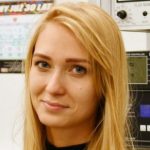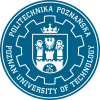In the article entitled Ferromagnetism in Two-Dimensional Dysprosium-Platinum Surface Alloy we present the results of comprehensive characterization studies of the properties of a new two-dimensional magnetic material – ideal for use as a substrate for studying magnetic molecules.
The presented research is a result of work carried out in the UHV STM LAB and during beamtime at the SLS synchrotron facility in Switzerland. The work presents a comprehensive description, starting with determining the method of producing this material through characterization of its structural and electronic properties, and ending with determining the magnetic properties.
Using STM and LEED techniques, we depicted the ordering of atoms and determined the parameters of the unit cell of the 2D DyPt2 surface alloy. Moreover, we were able to observe long-range order – the moiré pattern, which results from the superposition of two atomic lattices with different lattice constants and/or rotation. As a result, the distance between the surface alloy layer and the substrate varies, and therefore, the coupling of the alloy with the substrate is modulated. This, in turn, affects the modulation of the electronic properties of the alloy. We also determined local changes in the work function.
The key stage of the characterization for potential applications of the alloy was to determine the magnetic order and Curie temperature using the XMCD technique. 2D DyPt2 is a ferromagnet with a low Curie temperature, on the order of several Kelvins. In the context of materials research, it is therefore an ideal substrate for the deposition of molecules and the study of their magnetic properties. The Curie temperature in this range is accessible for current technological/instrumental capabilities and therefore easily allows for switching the magnetic state of the substrate and analysis of its effect on the properties of molecules.
We are the more pleased as the work has been accepted for publication in the prestigious journal Nano Letters of the American Chemical Society.
You can read more about our research >>> HERE <<< We have published the work in open access!





